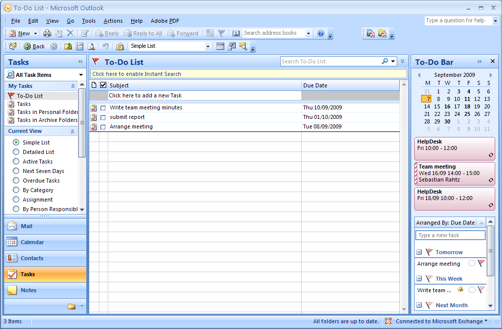Outlook 2007
Post on: 29 Июль, 2015 No Comment

If you’re an investor looking for a substitute for income trusts in your RRSP portfolio, you may be surprised to hear that many financial advisers still recommend keeping a healthy portion of them.
I really believe that investors should not abandon income trusts, says Al Nagy, a financial planner at Investors Group in Edmonton. These investments can continue to form part of your portfolio going forward.
Healthy income portfolios usually contain bonds as well as Canadian and global dividend-paying companies, but financial advisers recommend at least some exposure to income trusts — still a good source of after-tax yield above the rate of inflation, which is a key factor for retirement income.
What’s the asset class that gives you 6-per-cent to 9-per-cent yield with some tax efficiencies and a little bit of growth to protect you from inflation? asks Gavin Graham, chief investment officer of Guardian Group of Funds Ltd.
Although some income-trust investors absorbed losses after the federal government’s decision last fall to phase out the tax-free status of trusts by 2011, and to tax them at the same rate as corporations, some of the value has come back, Mr. Graham notes.
It helps that the Conservative government has since clarified that income trusts can continue to grow, up to double in size from the Oct. 31 announcement. Trusts may also merge with other trusts and corporations, or convert their businesses into corporations without incurring a tax penalty.
Despite such amendments, a parliamentary committee has decided to hold hearings into the matter. MPs on the finance committee want to hear from experts and interest groups about the impact for investors and the income-trust industry.
Even if there is a further upside as a result of the politics and lobbying efforts, the central attraction of trusts is that many are well-managed businesses that compare favourably with other high yielding equities, Mr. Nagy says.
The only difference is that now income trusts are discounted. And you still have a window going forward to decide what to do, he says, pointing to 2011, the year trusts will be taxed for the first time. To me, the whole income-trust issue has been an opportunity to sit down with people and re-examine their whole diversification strategy.
As always, the question of how much exposure you need to any type of investment begins with your needs and risk tolerance and ends with a handful of investment vehicles and strategies to achieve specific returns. Chances are that even if you’re not directly exposed to an income trust or an income trust fund, your Canadian equity funds contain some. Your adviser should be able to tell you how much you own; if your portfolio is self-directed, you can consult your fund prospectuses or online asset-allocation programs.
Dan Hallett, president and chief executive officer of Dan Hallett & Associates Inc. of Windsor, Ont. says that before the government’s decision he was structuring client portfolios with up to 12 per cent total exposure to income trusts.
Today, that figure would be lower, he says. He recommends funds that contain at least 5 per cent income trusts, which are home to some quality businesses with good fundamentals.
Advisers including Mr. Hallett and Mr. Nagy note that holding too much of any investment — including trusts — can be risky. The optimal alternative is always the same: A portfolio diversified across many asset classes, and subclasses, with a tilt in favour of higher yield securities, says Mr. Hallett.
With that in mind, here are a range of income-yielding investments that could be held in place of income trusts.!
Dividend-paying stocks !
Always a good idea because they consistently outperform the index, and we’re very lucky in Canada that we have over one-third of our market in [companies] like banks, insurers and pipelines, Mr. Graham says.
Dividend-paying common shares and preferred shares yield anywhere from 4 per cent to 6 per cent. Investors may enjoy some capital appreciation over the long term, plus they may be able to claim a dividend tax credit to bump the yield a bit more.!
Global dividend stocks !
Many investors are considering foreign dividend-paying companies, too, Mr. Graham notes.
The disadvantage is that when it comes to tax time next year, investors won’t be able to claim the dividend tax credit on the foreign income, and they will also pay a foreign withholding tax. But it’s still a reasonable yield compared to 4-per-cent government and U.S. bonds, he says.
An investment in dividend-paying firms such as U.S. drug giants Pfizer Inc. and Bristol-Myers Squibb Co. has the added benefit of diversification into large-cap health care stocks, which Canada lacks, Mr. Graham says.!
Government and real-return bonds are always an option. However, they are paying about 4 per cent before tax — scarcely higher than inflation.

Corporate bonds are the next obvious choice, but the demand for yield is high and the supply of quality bonds is short, so investors pay above coupon rates. In the end, they won’t yield much more than government bonds, Mr. Graham says.
High-yield bonds are actually attractive, but you need a good manager because if the economy slows down you’re going to get defaults, he adds. For example, a 10-year GMAC (Canada) bond rated BBB (low) by Dominion Bond Rating Service Ltd. and BB by Standard & Poor’s Corp. pays 7.25 per cent, but both agencies include the company on their credit watch.!
Mutual funds !
Some mutual fund companies offer global income funds that invest in a basket of trusts, bonds and dividend-paying companies such as Nestlй SA of Switzerland, the world’s biggest food maker, or Britain’s Diageo PLC, which makes Johnnie Walker Scotch and other liquors, Mr. Graham says.!
Non-registered retirement funds!
If you’re among the lucky few who manage to max out their RRSP allotment and have extra cash to invest, you’ll find fund companies that offer tax-efficient vehicles.
Northern Rivers Monthly Income and Capital Appreciation Fund, for example, uses a forward contract to convert investment income into return of capital.
It reduces your adjusted cost base, so you’re deferring the payment of tax until you decide you have to sell the fund, says Liis Palmer, a portfolio manager with Cassels Investment Management Inc. of Toronto, which manages the fund.
When you sell, you’ll still pay capital gains, but at a lower overall rate, she adds: You can’t forget about taxes when you’re living on investment income.
The fund invests in income trusts, global dividend-paying stocks and a basket of high-yield bonds and is sub-advised by Brookfield Investment Funds Management Inc.
Theresa Ebden is an associate producer for Report on Business Television.














